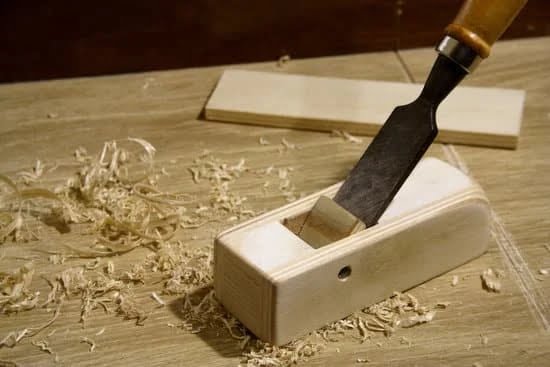Woodworking is a craft that requires precision and attention to detail. One tool that has become essential for woodworkers is the router. In this article, we will explore how to use routers for woodworking, providing you with the knowledge needed to enhance your woodworking skills.
Routers play a crucial role in woodworking projects as they allow for precise shaping, joinery, and decorative work on wood surfaces. This versatile power tool can be used to create intricate designs, make grooves or contours, and even hollow out wood to create stunning pieces of furniture or art.
There are different types of routers available in the market today, each with its own unique features and advantages. For example, plunge routers are great for making precise cuts and grooves by plunging the bit into the material at any point. On the other hand, fixed-base routers are ideal for more stationary work and controlled cutting.
Using routers in woodworking offers numerous benefits. Firstly, they provide unmatched precision and accuracy, allowing woodworkers to achieve clean and professional-looking results. Routers also streamline the work process by making it easier to replicate patterns or designs consistently. Additionally, routers offer versatility by accommodating various accessories such as edge guides or different router bits to expand their functionality.
In this comprehensive guide on how to use routers for woodworking, we will delve into every aspect of these powerful tools. From understanding the different types and parts of routers to choosing the right one for your projects, from safety precautions to advanced techniques – we have got you covered. So gear up and get ready to dive into the world of routing as we unlock countless possibilities for you in woodworking.
Understanding the Different Types and Parts of Routers
Routers are versatile tools that play a vital role in woodworking projects. Understanding the different types and parts of routers is essential for woodworkers to select the right tool for their specific needs. In this section, we will explore the various types of routers and their key components.
There are two main types of routers commonly used in woodworking: plunge routers and fixed-base routers. Plunge routers allow the user to adjust the cutting depth while the router is in operation, making them suitable for tasks such as mortising or creating grooves.
On the other hand, fixed-base routers have a fixed cutting depth and are more stable, making them ideal for tasks like edge profiling and trimming edges. Each type has its own advantages and can be useful depending on the nature of your project.
Regardless of the type, all routers consist of several essential parts. The base is the flat surface that rests on the material being worked on and provides stability during operation. It may have handles or knobs for easy maneuverability. The motor is responsible for spinning the router bit at high speeds, typically powered by electricity or batteries. Routers also have collets to hold and secure different sizes of router bits, ensuring accuracy during routing tasks.
Understanding these different types and parts of routers is crucial as it allows woodworkers to choose a tool that best suits their specific needs. For instance, when working on intricate designs that require precise depth adjustments, a plunge router would be preferred over a fixed-base router. Similarly, knowing how different components work together helps ensure proper handling and safe operation of the router.
Types of Routers
| Type | Description |
|---|---|
| Plunge Router | A router that allows adjustable cutting depth while in use. |
| Fixed-Base Router | A router with a fixed cutting depth for stability during operation. |
Parts of a Router
| Part | Description |
|---|---|
| Base | The flat surface that rests on the material and provides stability. |
| Motor | The component responsible for spinning the router bit at high speeds. |
| Collet | The part that holds and secures different sizes of router bits. |
By understanding the different types and components of routers, woodworkers can choose the most suitable tool for their projects and ensure safe and efficient use. Whether you need adjustable cutting depth or precise trimming capabilities, selecting the right router will enhance your woodworking skills and help you achieve professional-quality results.
Choosing the Right Router for Woodworking Projects
When it comes to woodworking projects, selecting the right router is crucial. The right router can make a significant difference in the quality and efficiency of your work. With so many options available in the market, it can be overwhelming to choose the best one for your specific needs. In this section, we will explore the factors to consider when selecting a router and compare different models to help you make an informed decision.
Factors to Consider
Before purchasing a router, there are several factors to consider. One important factor is power. The power of a router determines its ability to handle different types of wood and cut through them smoothly. Higher horsepower routers are generally better suited for heavy-duty tasks and larger projects.
Another factor to consider is speed control. Some routers offer variable speed settings, allowing you to adjust the speed based on the type of wood and cut you are making. Variable speed control provides versatility and precision when working on various woodworking projects.
Ergonomics is also essential when choosing a router. Look for routers with comfortable handles that provide a secure grip during operation. A well-designed router will minimize hand fatigue during long hours of woodworking.
Comparison of Router Models
To make an informed decision, it is essential to compare different router models available in the market. Some popular models include plunge routers and fixed-base routers.
Plunge routers are versatile and great for tasks like cutting grooves, dadoes, or shaping edges. They have a spring-loaded base that allows you to plunge the bit into the material at any point.
Fixed-base routers, on the other hand, are more stable and ideal for tasks that require consistent depth cuts such as edge profiling or dovetailing joints.
Each type has its advantages and disadvantages, so it’s important to understand your specific woodworking needs before making a choice.
Overall, choosing the right router for your woodworking projects requires careful consideration of factors such as power, speed control, and ergonomics. By comparing different models and understanding your specific needs, you can find the perfect router that will enhance your woodworking experience and help you achieve outstanding results.
Remember to incorporate these considerations when selecting a router for woodworking projects. Choosing the right router is a crucial step in ensuring success and efficiency in your woodworking endeavors.
Safety Precautions and Proper Handling of Routers
Woodworking can be a fulfilling and enjoyable hobby, but it is important to prioritize safety when using power tools such as routers. Routers are versatile tools that can make intricate cuts and shapes in wood, but they also pose certain risks if not handled properly. In this section, we will discuss the necessary safety precautions and guidelines for handling routers to avoid accidents and injuries.
One of the first steps in ensuring safety when using routers is wearing the appropriate protective gear. Goggles should always be worn to protect the eyes from flying debris or chips. Ear protection is also essential since routers can produce loud noise levels that may be damaging to hearing. Additionally, it is recommended to wear a dust mask or respirator to prevent inhalation of wood dust particles.
Before starting any woodworking project with a router, it is crucial to read and understand the manufacturer’s instructions and recommendations for safe handling. This includes familiarizing yourself with the specific safety features of your router model and understanding how to properly adjust them. It is also important to ensure that your workspace is well-lit, clutter-free, and properly ventilated.
When operating a router, it is vital to maintain a firm grip on both handles at all times, keeping your hands away from the cutting area. Never attempt to freehand route without using a jig or guide unless you have advanced experience with routers. Always use appropriate clamps or fixtures to secure the workpiece in place before routing.
| Safety Precautions | Proper Handling Guidelines |
|---|---|
| – Wear goggles, ear protection, and a dust mask/respirator | – Read manufacturer’s instructions thoroughly before use |
| – Ensure well-lit, clutter-free workspace with proper ventilation | – Maintain a firm grip on both handles of the router |
| – Use appropriate clamps or fixtures to secure workpiece | – Avoid freehand routing without a guide, unless experienced |
By following these safety precautions and handling guidelines, you can significantly reduce the risk of accidents while using routers for woodworking. Remember that practicing safe habits should always be a priority to protect yourself and ensure an enjoyable woodworking experience.
Essential Router Bits and Their Uses in Woodworking
Introduction to Router Bits
Router bits are essential tools in woodworking that attach to the collet of a router. They come in various shapes and sizes, each designed for specific cuts and finishes. Understanding the different types of router bits and their uses is crucial for achieving precise and professional results in woodworking projects. In this section, we will explore a comprehensive list of essential router bits and delve into their specific applications.
Straight Bits
Straight bits are among the most commonly used router bits and are characterized by their straight cutting edges. They are ideal for creating grooves, dadoes, and rabbets on wood surfaces. Straight bits come in different diameters, allowing woodworkers to choose the appropriate size depending on the desired outcome. These versatile router bits can be used in various woodworking projects such as edge trimming, joinery, and making tenons.
Rabbeting Bits
Rabbeting bits have a pilot bearing at the top that acts as a guide along the edge of the material being cut. They are specifically designed for creating rabbet joints or recessed areas on wood surfaces, allowing one piece of wood to fit securely into another. Rabbeting bits often come with interchangeable bearings of different sizes to achieve varying depths of cut.
Chamfer Bits
Chamfer bits are used to create beveled edges or decorative chamfers on wooden pieces. These router bits typically have angled cutting edges that allow woodworkers to shape and smooth sharp corners or add visual interest to furniture or moldings. Chamfer bits come in different angles, enabling users to choose between subtle chamfers or more pronounced bevels.
Other types of essential router bits include flush trim bits for trimming laminates or veneers flush with underlying surfaces, roundover bits for rounding over sharp edges, cove bits used to create concave cuts, and many more. Each router bit offers unique capabilities, making it important for woodworkers to have a collection of different types to tackle a wide range of projects.
Learning how to properly use each router bit and understanding their intended applications is crucial for achieving the desired results in woodworking. By experimenting with various bits and techniques, woodworkers can broaden their skill set and take on more intricate projects.
Remember, to optimize SEO, make sure to include the keyword “how to use routers for woodworking” throughout this section as well as the rest of the article.
Basic Router Techniques for Woodworking Projects
Once you have chosen the right router and familiarized yourself with its different parts, it’s time to learn some basic techniques for using a router in woodworking projects. These techniques will help you make simple cuts, grooves, and bevels with precision and ease. By mastering these basic router techniques, you can elevate your woodworking projects to new heights.
- Making Simple Cuts: To make a simple cut with a router, start by securing your workpiece firmly in place using clamps or a vise. Then, adjust the depth of cut on your router based on the desired thickness of the material you are working with.
Slowly guide the router along the edge of the workpiece, moving against the rotation of the bit. Take care to maintain a steady and even pace to ensure clean and smooth cuts. - Creating Grooves: Grooves are commonly used in woodworking projects for joinery and decorative purposes. To create a groove using a router, attach a straight bit to your router and set the depth of cut accordingly.
Measure and mark the location of the groove on your workpiece before beginning. Start at one end of the marked line and slowly guide the router along, keeping it pressed against a straightedge or guide to ensure a straight and accurate groove. - Beveling Edges: Beveling edges adds an elegant touch to furniture pieces or decorative items. To bevel an edge using a router, choose an appropriate chamfer or beading bit based on your desired design. Adjust the depth of cut as needed and secure your workpiece in place.
Starting at one end of the edge, slowly guide the router along while maintaining consistent pressure against the workpiece. Move in a direction that allows you to move against any grain present, resulting in clean and smooth beveled edges.
By practicing these basic techniques, you will gain confidence in using routers for woodworking projects. Remember to always prioritize safety by wearing protective gear and following proper handling procedures. With time and experience, you will be able to incorporate these techniques into various woodworking projects, allowing you to create beautiful and intricate designs.
Advanced Router Techniques for Versatile Woodworking
When it comes to woodworking, routers are incredibly versatile tools that can be used for a wide range of tasks. In this section, we will explore some advanced techniques that can take your woodworking skills to the next level. By mastering these techniques, you will be able to create more intricate and professional-looking projects.
One advanced technique is router joinery, which involves using a router to create strong and precise joints in wood. This technique is commonly used in furniture making and cabinetry. There are several types of router joinery techniques, including dado joints, mortise and tenon joints, and dovetail joints. By using specialized router bits and carefully adjusting the depth settings on your router, you can achieve perfectly fitting joints that will withstand the test of time.
Dovetailing is another advanced technique that adds both strength and beauty to woodworking projects. Dovetails are interlocking joints that are commonly used in drawer construction and box making. With a dovetail bit and some practice, you can create elegant and durable dovetail joints with your router. This technique requires careful attention to detail and precision routing, but the end result is well worth the effort.
Edge profiling is yet another advanced technique that allows you to add decorative elements to your woodworking projects. With the use of specialized router bits, you can create beautiful profiles on the edges of tabletops, cabinet doors, and other pieces of furniture. From simple roundovers to complex ogees or Roman ogees, there are endless possibilities for adding unique details to your work.
By mastering these advanced router techniques, you can elevate your woodworking projects to new heights. However, it’s important to note that these techniques require patience and practice to achieve desired results. Always start with scrap pieces of wood before attempting them on actual projects.
Remember: how to use routers for woodworking is all about developing skills over time with experience gained through different applications.
Troubleshooting and Maintenance of Routers
Routers are versatile tools that play a crucial role in woodworking projects. However, like any power tool, they can encounter issues that may hinder their performance. In this section, we will discuss some common troubleshooting techniques as well as provide tips on how to properly maintain and clean your router to ensure its longevity.
Common Issues and Solutions:
- Router Kickback: Router kickback occurs when the wood being routed is caught or spun out of control, causing the router to violently jerk back towards the operator. To prevent kickback, always ensure that your router bit is sharp and properly tightened. Additionally, make sure you are using the correct cutting technique – moving the router against the rotation of the bit.
- Router Bit Slipping: If you find that your router bit keeps slipping during use, it may be due to insufficient tightening of the collet. Make sure you are using an appropriate wrench to tighten the collet firmly around the shank of the bit.
- Burn Marks on Wood: Burn marks can occur when routing at high speeds or when using dull bits. To avoid burn marks, reduce the speed of your router and use sharp bits. You can also try using a lower feed rate to minimize friction.
Maintenance Tips:
- Cleaning: Regularly clean your router after each use to remove wood chips and dust buildup. A soft brush or compressed air can be used to clean hard-to-reach areas. Avoid blowing air directly into the motor vents as it may push dust deeper into sensitive parts.
- Lubrication: Apply a small amount of lubricant to necessary moving parts such as depth adjustment screws and plunge mechanisms for smooth operation.
- Bit Care: Properly store your router bits in a safe place where they won’t get damaged or dulled by knocking against each other or other tools. Sharpen or replace dull bits as required to ensure clean cuts.
By troubleshooting common issues and performing regular maintenance, you can keep your router in optimal condition for years of woodworking projects. Remember, always refer to the manufacturer’s manual for specific guidelines on troubleshooting and maintenance procedures for your particular router model.
Remember to optimize your SEO by including the keyword “how to use routers for woodworking“.
Conclusion
In conclusion, routers are an essential tool for woodworking that can greatly enhance your skills and capabilities in the craft. Throughout this article, we have explored the different types of routers available, discussed the various parts and components of a router, and provided guidance on how to choose the right router for your woodworking projects.
We have also covered important safety precautions and proper handling techniques to ensure your well-being while using routers. Additionally, we delved into a comprehensive list of router bits and their specific uses in woodworking. From basic cuts and grooves to advanced techniques like dovetailing and edge profiling, routers offer endless possibilities for creativity and precision.
To fully harness the power of routers in woodworking, it is crucial to practice and experiment with different techniques. As with any skill, mastery comes from hands-on experience. By applying the tips and tricks provided in this article, you will be able to achieve clean and precise cuts that take your woodworking projects to new heights.
So, don’t be afraid to dive into the world of routers and explore all they have to offer. With time and practice, you will become more proficient in utilizing these versatile tools to bring your woodworking visions to life. Remember, enhancing your woodworking skills with routers is a journey that requires patience but offers immense rewards – both in terms of personal achievement and the breathtaking creations you can produce.
Frequently Asked Questions
Do I really need a router for woodworking?
It is highly recommended to have a router for woodworking as it is an incredibly versatile and valuable tool in the woodshop. A router allows you to shape, trim, and create decorative edges on wood pieces with precision and ease.
It can be used for tasks like cutting grooves, dadoes, and rabbets, as well as making intricate patterns or joints. A router opens up a whole world of possibilities in terms of design and craftsmanship, allowing you to achieve professional-quality results that would be difficult or time-consuming to accomplish with other tools.
What are the disadvantages of a router woodworking?
While routers are indispensable tools in woodworking, they do come with a couple of disadvantages that one should be aware of. Firstly, routers are noisy machines that produce a considerable amount of sound during operation. This can be bothersome, especially if you have noise-sensitive individuals around or if your workshop is situated in a shared space.
Secondly, using a router without proper safety precautions can be hazardous. Routers have sharp bits spinning at high speeds, which means that accidental contact with these bits can result in serious injuries. It is crucial to use protective gear such as safety goggles and work responsibly when operating a router to mitigate any potential risks.
How do you use a wood router table for beginners?
When starting out with a wood router table as a beginner, it’s essential to familiarize yourself with the basic operation and safety guidelines before diving into more complex projects. Begin by selecting the appropriate router bit for your desired task and securely mounting it onto the router’s collet using the provided wrenches. Adjust the depth setting based on the depth required for your cut or carving; this can typically be done by raising or lowering the bit within the collet assembly. Make sure your workpiece is properly secured on the routing table using clamps or other suitable methods to prevent movement while you operate the router.
To make cuts or grooves in the wood, gently guide your workpiece along the fence or against other guiding mechanisms while keeping your hands clear of the router bit’s path. It’s crucial to maintain a steady and controlled movement to ensure accuracy and minimize the risk of accidents. As you gain experience, you can explore more advanced techniques and projects, but always prioritize safety by wearing protective gear and practicing proper routing habits.

Hi everyone! I’m a woodworker and blogger, and this is my woodworking blog. In my blog, I share tips and tricks for woodworkers of all skill levels, as well as project ideas that you can try yourself.





